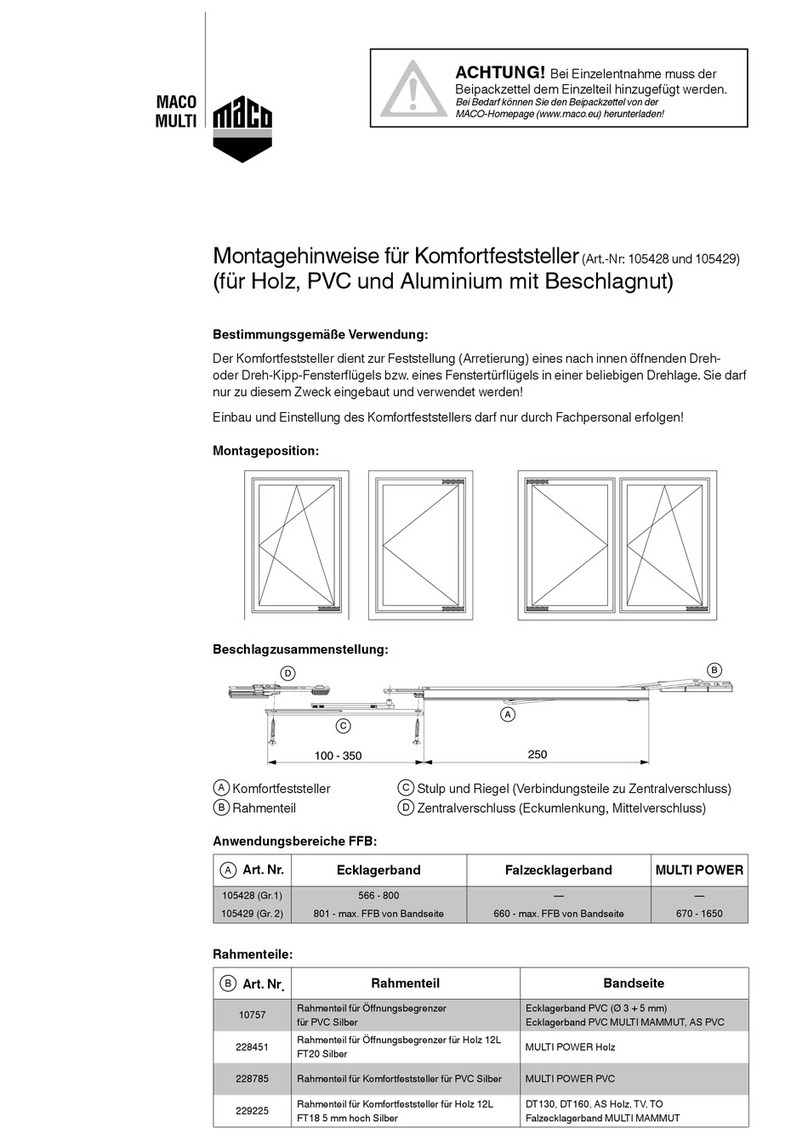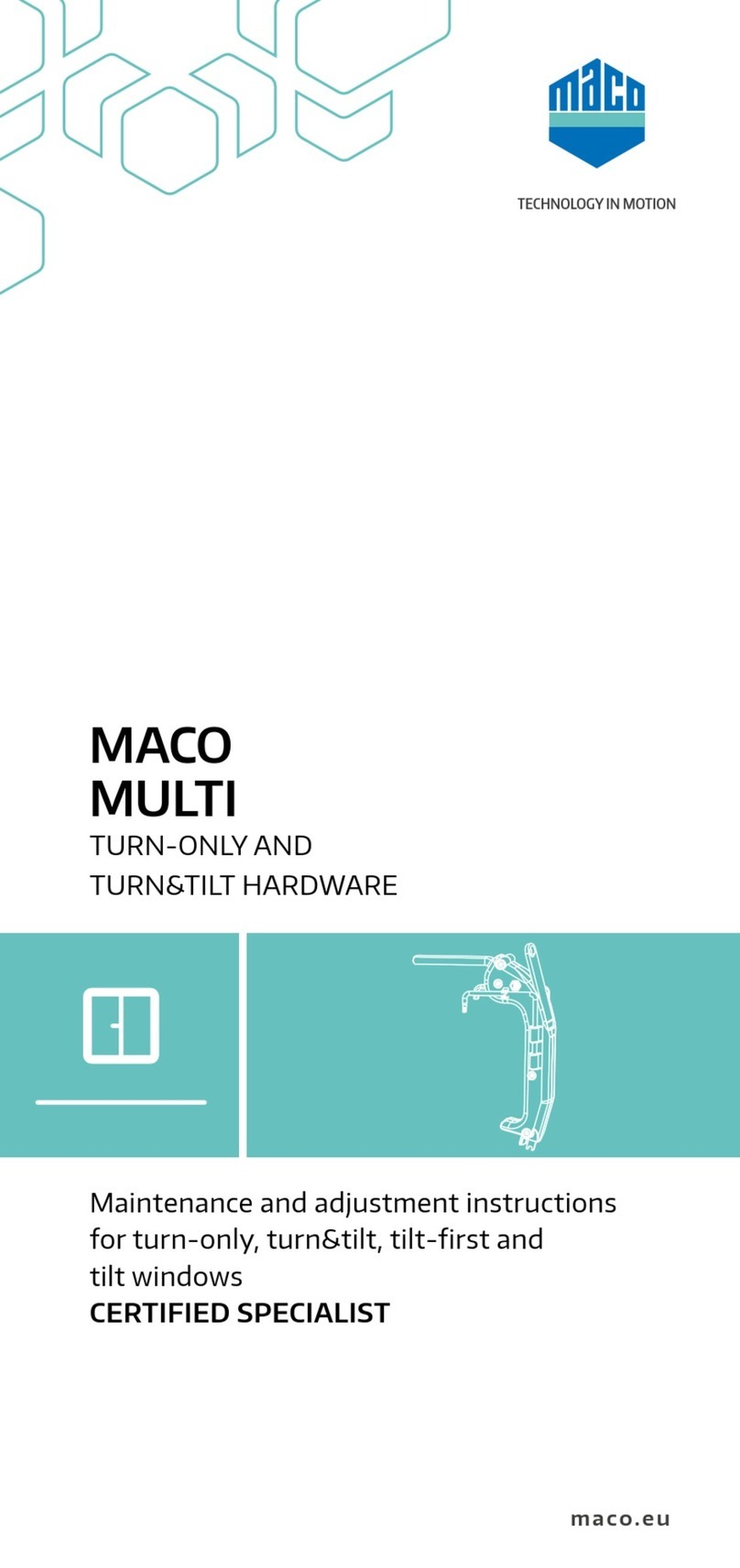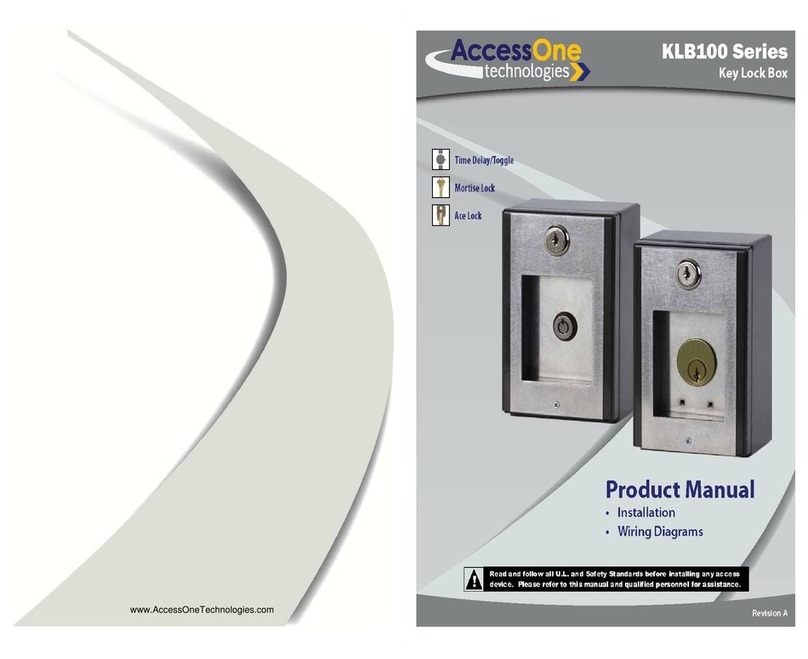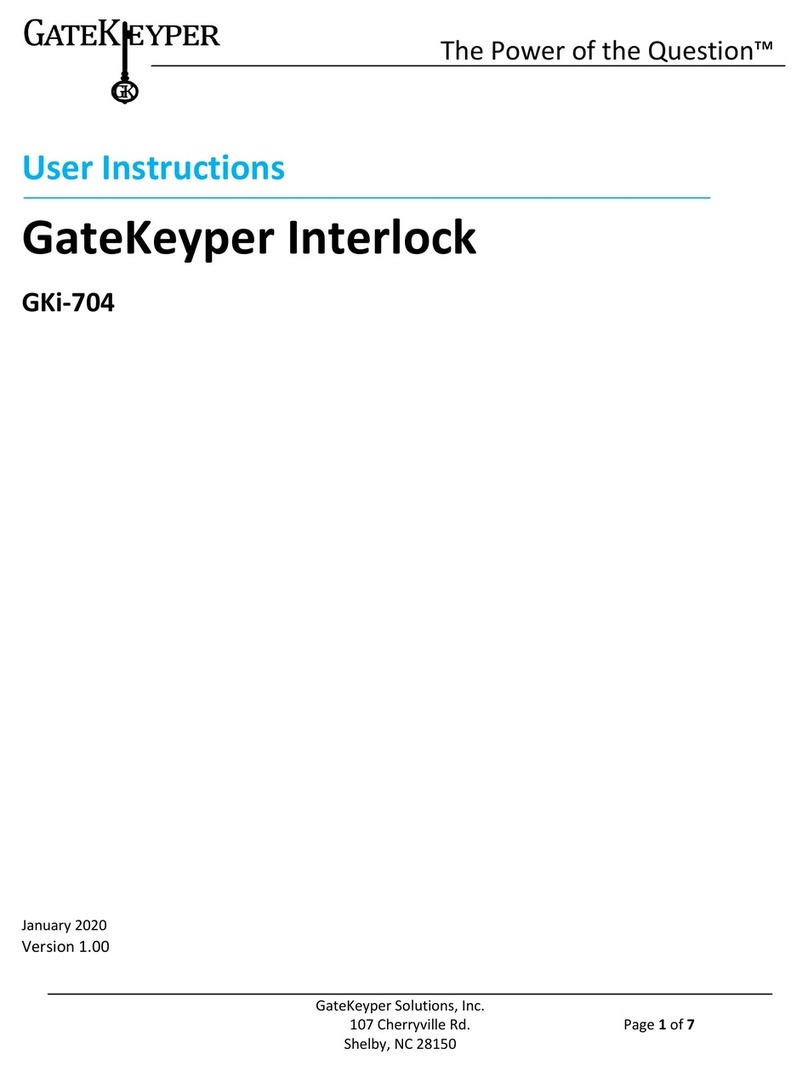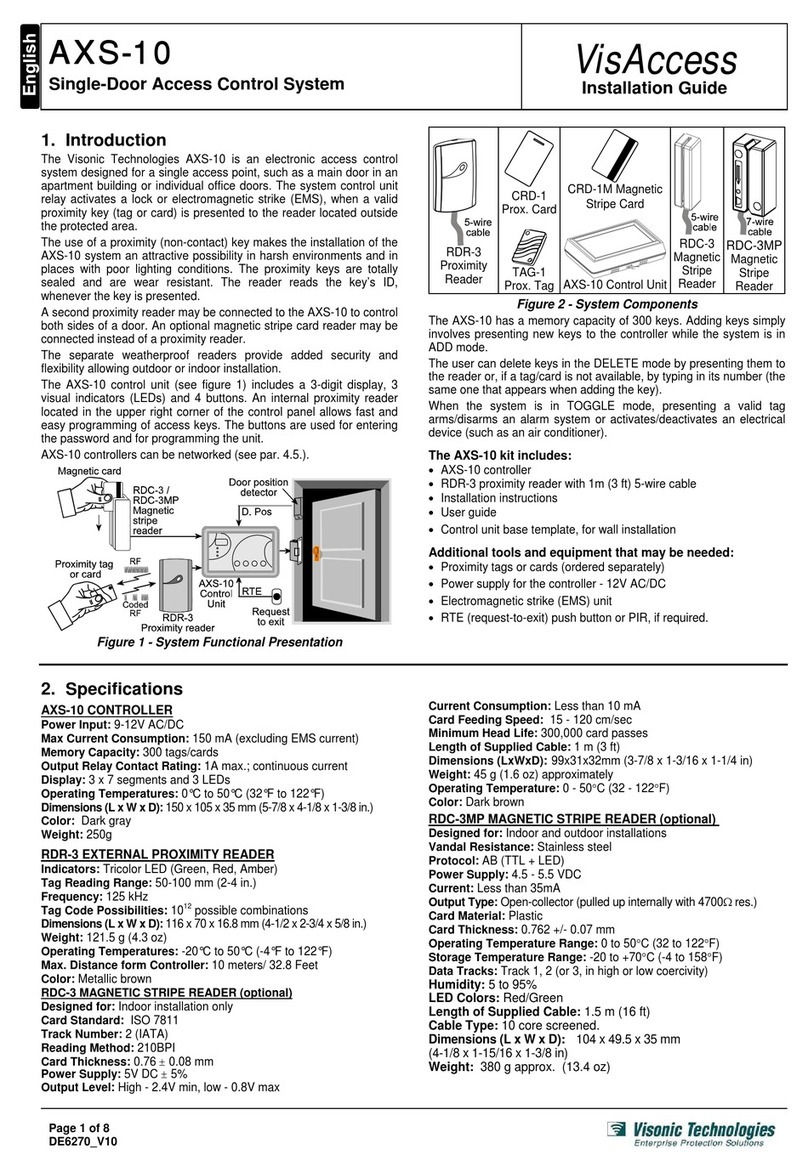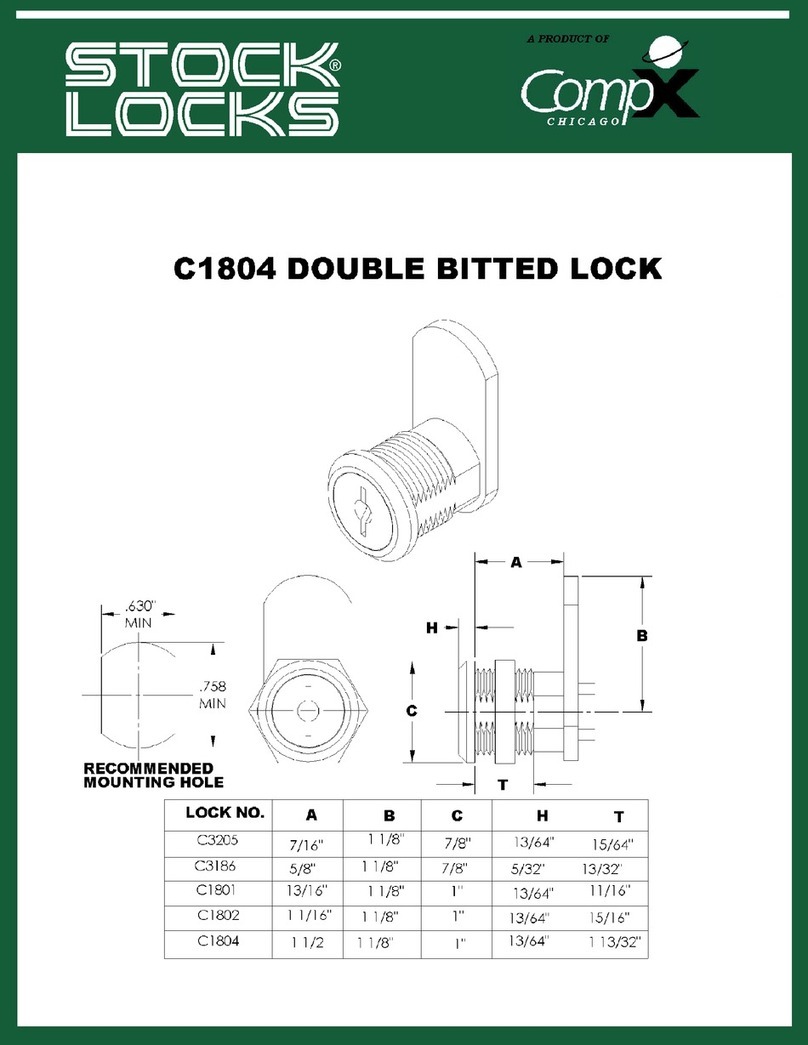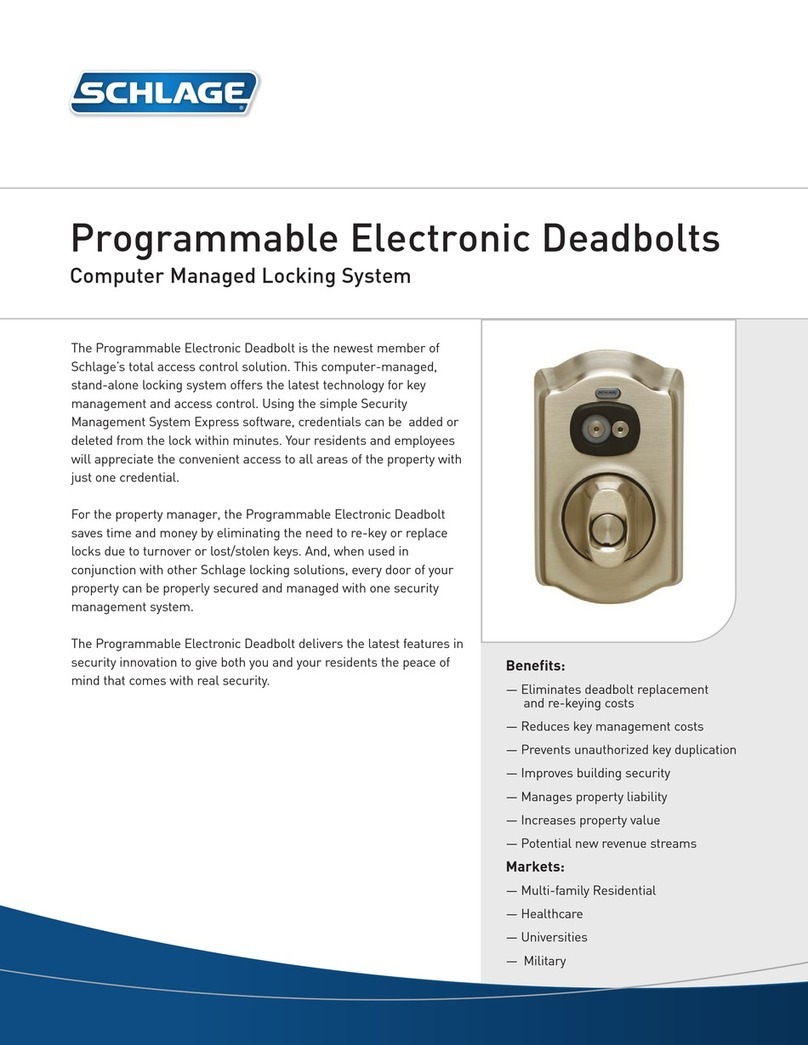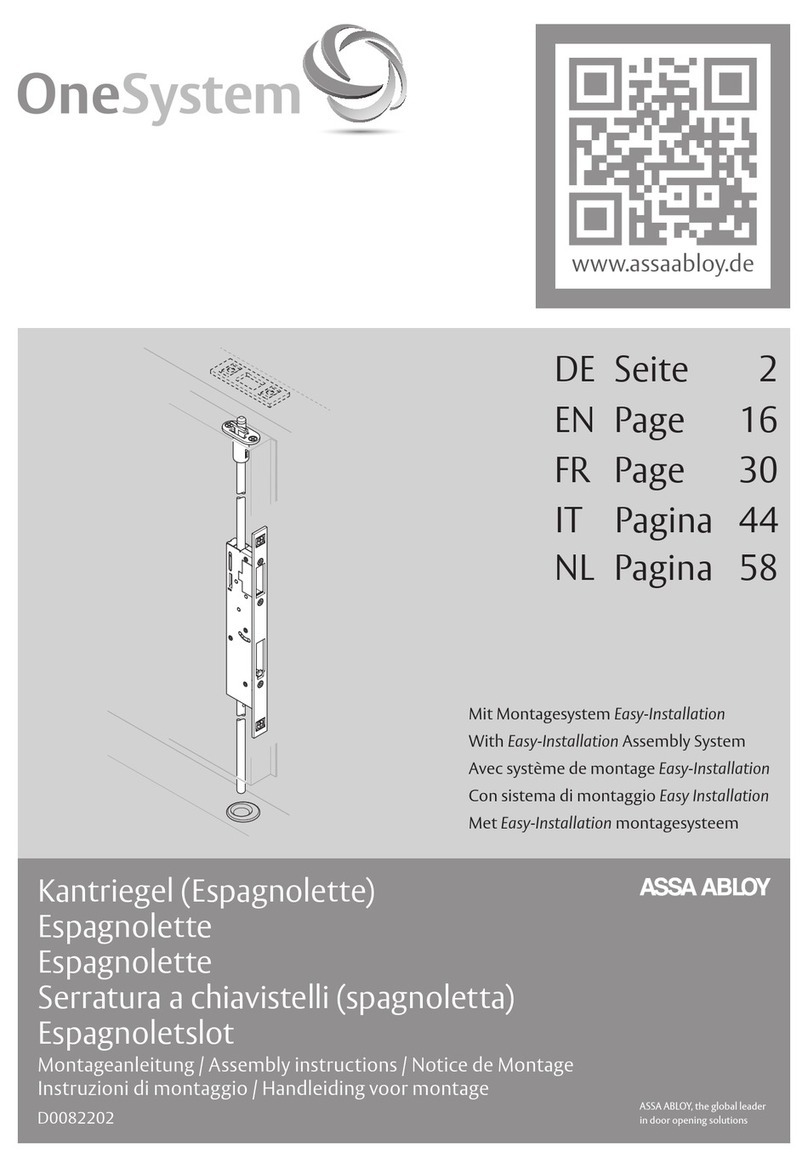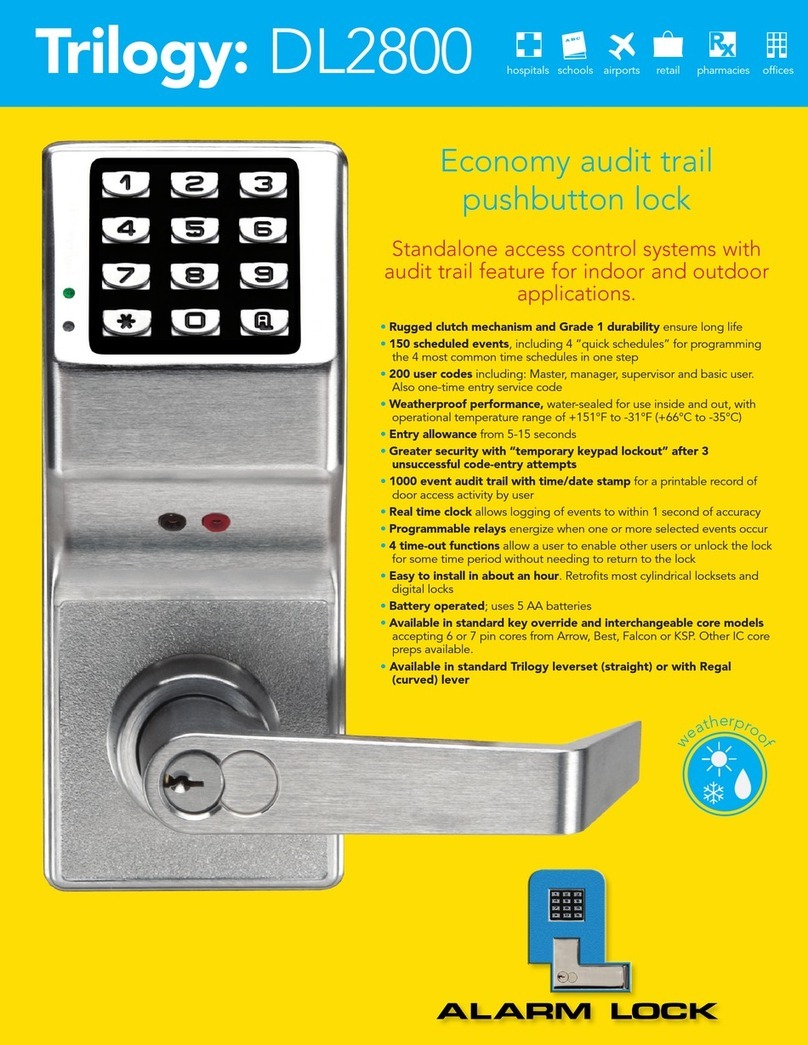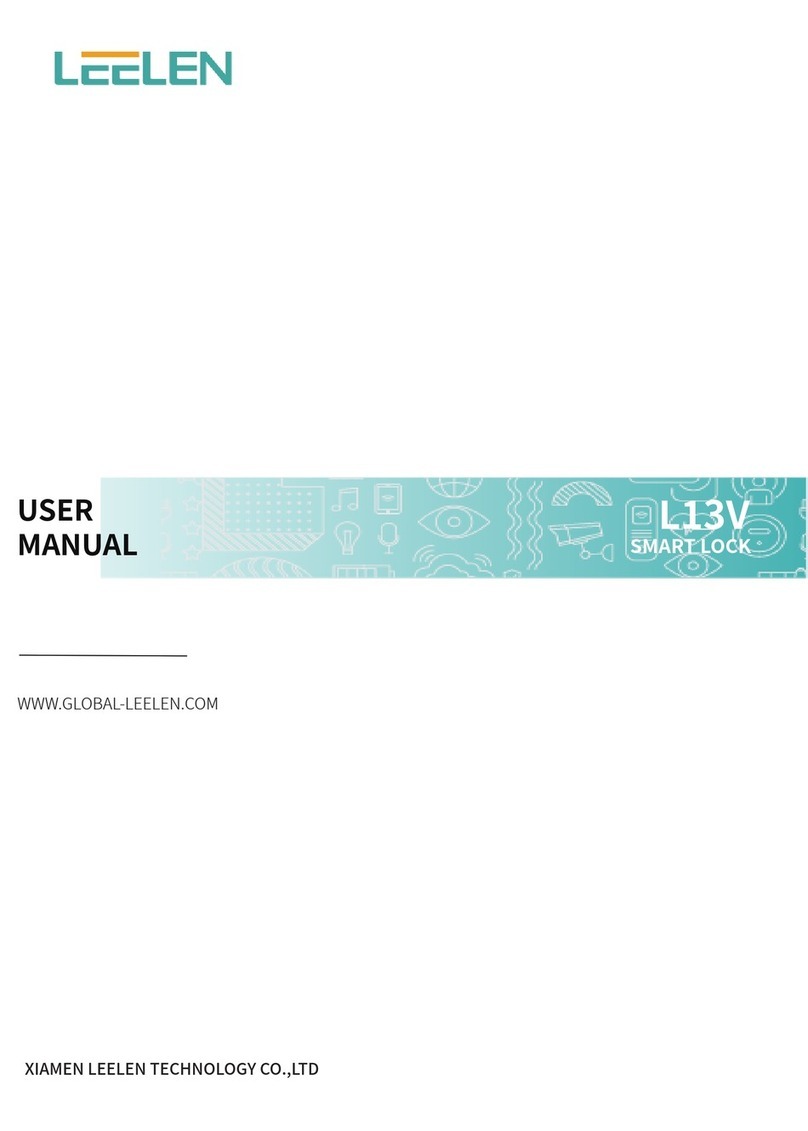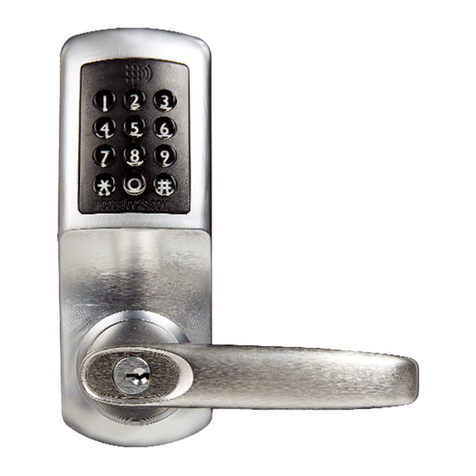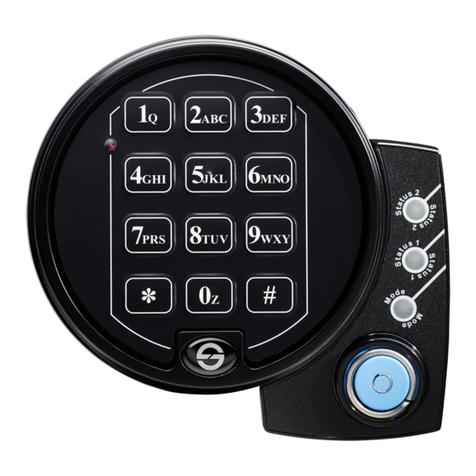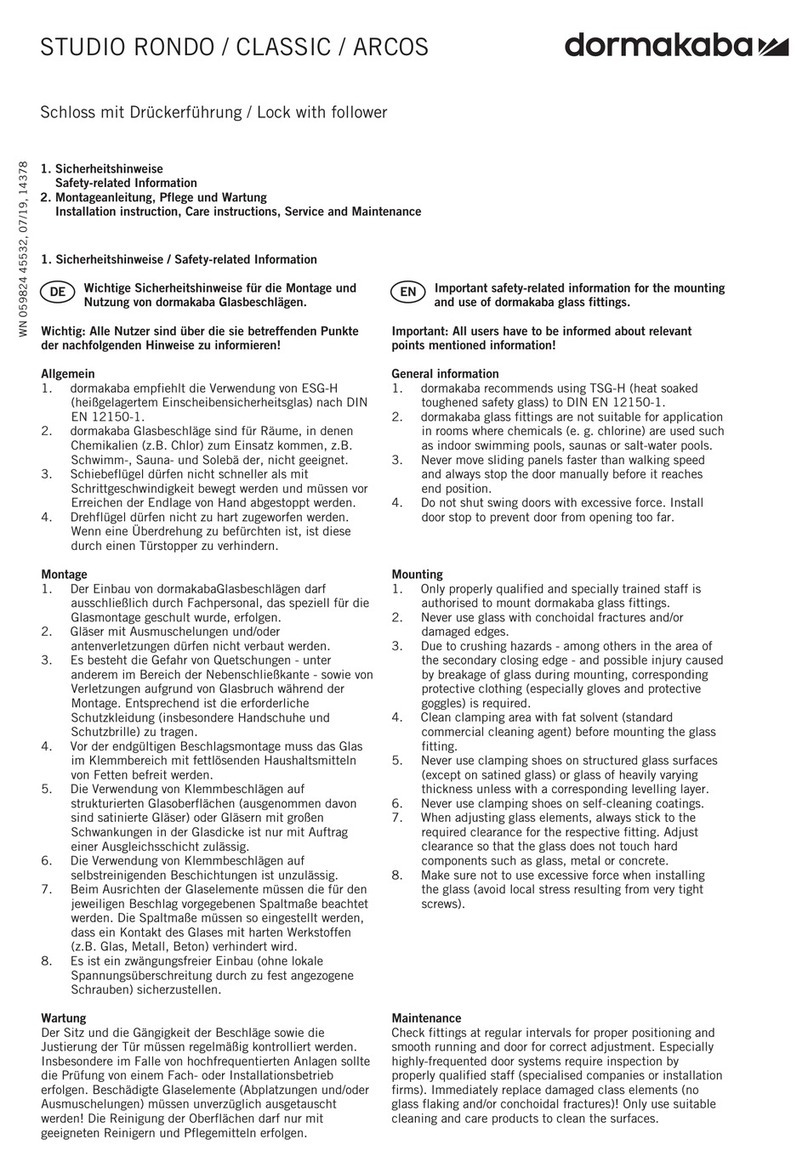Maco RAIL-SYSTEMS S&T-S Manual

MACO
RAIL-SYSTEMS
SLIDING HARDWARE
Operating and maintenance instructions
for slide & tilt standard, self-engaging,
positive control and PAS
END USERS & CERTIFIED SPECIALISTS
TECHNOLOGYIN MOTION

- 2 -
These operating and maintenance instructions are intended
for end users and must be retained. All users must be informed
about the content for security reasons.
Keep this manual for future reference!
This manual is also available for download at www.maco.eu - Order
number 757803.
Table of Contents
Explanations to this manual 3
Proper us 4
Safety and warning informations 4 - 7
Misuse 8 - 9
Operating and cleaning informations 10 - 12
Maintenance instructions 13 - 17
Spare parts, customer service 18

- 3 -
Explanations to this manual
DANGER indicates a hazardous
situation which, if not avoided,
will result in death or fatal injury.
WARNING indicates a hazardous
situation which, if not avoided,
could result in death or serious
injury.
CAUTION indicates a hazardous
situation, if not avoided, could
result in minor or moderate
injury.
NOTICE is used to address
practices not related to
personal injury.
DANGER
WARNING
CAUTION
ACHTUNG
ACHTUNG
NOTICE
DANGER
WARNING
CAUTION
ACHTUNG
ACHTUNG
NOTICE
DANGER
WARNING
CAUTION
ACHTUNG
ACHTUNG
NOTICE
DANGER
WARNING
CAUTION
ACHTUNG
ACHTUNG
NOTICE

- 4 -
› For vertically installed windows or casement doors with sliding
hardware in building construction, these are lifted and shifted
horizontally by operating a window handle. In the case of special
designs, the sashes can also be pushed togehter in to a bundle
when slid.
› When closing and locking the window, the window must lock in
place and the window weatherseal should not permit the window
to remain unlocked and out of place.
Functionality when in open or ventilation positions
Opened window sashes, casement doors as well as windows and
casement door sashes in ventilation position (e.g. tilted position)
serve in a shielding capacity only. They do not meet the
requirements of:
› joint tightness
› sound insulation
› burglar-inhibiting
› watertightness
› thermal insulation
The properties listed only apply for window sashes and
casement doors with sliding hardware when locked.
Safety and warning informations
The following symbols illustrate the risks presented by windows and
casement doors:
DANGER
WARNING
CAUTION
ACHTUNG
ACHTUNG
NOTICE
DANGER
Crush hazard
•Moving parts can crush and cut
body parts.
•Keep body parts clear of
moving parts.
•Keep children and people who
cannot appreciate the risks
involved, away from danger
zones.
Proper use
DANGER
WARNING
CAUTION
ACHTUNG
ACHTUNG
NOTICE

- 5 -
DANGER
WARNING
CAUTION
ACHTUNG
ACHTUNG
NOTICE
DANGER
Fall hazard
•Death or serious injury will result
from falling through opened
windows and casement doors.
•Do not lean forward or lean out
when near open windows and
casement doors.
•Keep children and people who
cannot appreciate the risks
involved away from open
windows and casement doors.
DANGER
WARNING
CAUTION
ACHTUNG
ACHTUNG
NOTICE
DANGER
Additional loads on sash
•Destroyed hardware, frame
materials or other compoments
of windows and casement
windows cause sash to pop out
of its guide.
•Severe injuries or death are
caused by a sash falling out.
•Do not subject the sash to
additional loads.
DANGER
WARNING
CAUTION
ACHTUNG
ACHTUNG
NOTICE
DANGER
Electrical hazard
•Severe injuries or death are
caused by electricity.
•Keep away!
•Authorized personnel only.

- 6 -
DANGER
WARNING
CAUTION
ACHTUNG
ACHTUNG
NOTICE
WARNING
Wind hazard
•Severe injuries or death are
caused by windswept windows
and casement doors.
•Avoid opening the window when
winds and storms are forecast.
•Close and lock the window or
balcony door sash in the event
of wind and dras.
•Lock all sashes closed when
winds and storms are forecast.
DANGER
WARNING
CAUTION
ACHTUNG
ACHTUNG
NOTICE
WARNING
Risk of injury due to
backward snap handle
with sash above 440.92 lb
•Severe injuries or death caused
due to backward snap handle.
•Do not release the handle while
the sash is in motion.
•Do not release the handle till the
sash is safely locked.
DANGER
WARNING
CAUTION
ACHTUNG
ACHTUNG
NOTICE
WARNING
Cut/ sever hazard
•Be altert!
•Guide track has sharp edges.
•Be aware of sharp edges when
touching the guide tracks.

- 7 -
DANGER
WARNING
CAUTION
ACHTUNG
ACHTUNG
NOTICE
WARNING
Outstandig parts on the
frame
•Outstanding parts mounted on
the frame.
•Parts can cause severe injuries.
•Be aware of the protruding
parts when passaging.
DANGER
WARNING
CAUTION
ACHTUNG
ACHTUNG
NOTICE
CAUTION
Sash not open
•Be alert!
•Passage only with fully open
sash.
DANGER
WARNING
CAUTION
ACHTUNG
ACHTUNG
NOTICE
CAUTION
Trip hazard
•Be alert!
•Watch your step!

- 8 -
NOTICE
Additional loads on the
slide & tilt element
•The hardware, frame materials
or other components of the
slide & tilt element are
destroyed.
•If excessive loads are to be
expected on the slide & tilt
element in special
circumstances suitable
measures must be adopted to
prevent this.
Misuse
The following illustrations show various misuse operations that
must be prevented!
NOTICE
Wind Hazard
•The hardware, frame materials
or other components of the
slide & tilt element are
destroyed.
•Never swing the sash open
during winds and dras.
•Always close and lock the door
when wind or dras come up.
•Prevent wind from aecting the
open slide & tilt element.
•If high winds or storms are
coming, close and lock all doors.

- 9 -
NOTICE
Uncontrolled opening
and closing of the sash
•The hardware, frame materials
or other components of the
slide & tilt element are
destroyed.
•Never slash the sash in an
uncontrolled manner.
•Ensure when closing the sash,
the sash does not hit the frame
or another sash.
•The sash is to be guided through
its entire range of motion to the
fully closed position by hand
and brought very slowly and
without resistance ot the frame.
NOTICE
Objects in opening range
•Objects stuck between the sash
and the frame cause damage
to the frame, the hardware and
the sash.
•Never put any obstacles
between sash and frame.
In the event of obvious or visible damage or improper function, the
window or casement door must no longer be operated and must be
repaired right away by a certified specialist before any further use!
Claims of any kind arising from damage caused from use that does
not correspond to the intended purpose or misuse are excluded.
If in doubt, please ask your window supplier.

- 10 -
S&T-S & PAS
Lever / sash position Meaning
Sash closed position
Sash slide opening position
Sash tilt opening position
S&T-SE
Lever / sash position Meaning
Sash closed position
Sash tilt opening position
Sash slide opening position
Operating informations
The following symbols indicate the different possible lever posi-
tions and the resulting sash positions of the windows and casement
doors.

- 11 -
S&T-Z
Lever / sash position Meaning
Sash closed position
Sash tilt opening position
Sash slide opening position
S&T-upgrade
Lever / sash position Meaning
Sash tilt opening position
Sash slide opening position
Sash closed position

- 12 -
Cleaning informations
Regular cleaning is a prerequisite for preserving the service life and
functionality of the window. When cleaning the glass surfaces and
the other surfaces, also check the hardware components for
contamination and, if necessary clean with a damp cloth and a
pH-neutral cleaning agent. Only close the window or casement door
once the cleaned parts are dry.
To maintain the surface quality of the hardware components for the
intended use in the long-term and to avoid deterioration, the
following points must be observed:
Protection against corrosion:
› Ventilate the hardware and the rebate areas so that they are not
exposed to direct moisture or condensation (important during the
building stage).
› Clean the hardware components with a moist cloth only, avoid
permanent wetness!
Protection against soiling:
› The hardware should generally be kept free of deposits (e.g. salt in
coastal areas) and soiling. Immediately remove soiling during the
building stage caused by plaster, mortar or similar with water.
› Protect hardware and striker plates from contamination (dust,
dirt, paint, etc.).
Protection against corrosive, acidiferous cleaning agents:
› Clean the hardware with a soft, lint-free cloth and a mild,
pH-neutral cleaning agent in diluted form only. Never use
aggressive, acidic or solvent-based or abrasive cleaners (scouring
pads, steel wool, etc.). This can result in damage to the hardware!
› If hardware is damaged in this manner, it may impair the function
and/or impair the safety-relevant characteristics, and as a
consequence, this can result in personal injury and damage of
other items.

- 13 -
Inspections End Users Certified
specialist
Check for free motion of the
slide & tilt / parallel-stop unit and
the smooth running and position of
the handle in the closed position
(precise vertical position upwards)
and, if necessary, arrange for a
certified specialist to readjust the
slide & tilt / parallel-stop unit.
Check all hardware components
and striker plates for obvious
damage or wear (abrasion) and,
if necessary, arrange for replace-
ment by a certified specialist.
Check all moving hardware
components and striker plates for
proper function and lubricate /
oil them.
Check fixing screws and tighten
or replace as necessary.
Setting of the gasket compression
on the gear side, for standard and
hook drive gears.
Checking the gasket compression
for the locking cams or i.S. cams
and readjusting as necessary.
= only be undertaken by a certified specialist
Maintenance instructions
Your windows or casement doors are equipped with high quality and
durable MACO hardware. The following maintenance instructions and
prescribed intervals must be observed and followed in order to
ensure that they remain functional and safe for years to come.
DANGER
WARNING
CAUTION
ACHTUNG
ACHTUNG
NOTICE
In addition to regular cleaning, window and casement door hardware
requires regular inspection and maintenance to ensure usability and
safety. We therefore recommend an appropriate maintenance
contract with the manufacturer of your windows and casement doors.

- 14 -
Inspection intervals
Verified initial inspection 6 - 12 months after installation
Private user: Inspection every 12 - 18 months
Commercial use: Inspection every 12 - 18 months (depending on the
intensity of loads)
S&T-S hardware lubrication points

- 15 -
S&T-SE hardware lubrication points

- 16 -
S&T-Z hardware lubrication points

- 17 -
PAS hardware lubrication points
› The images shown are purely symbolic. The location and number
of lubrication points (●) depends on the actual size and design of
the window/casement door.
› Lubricate all moving parts and locking points of the tilt & slide and
parallel-stop slide hardware.
› Grease for hardware:
Adhesive lubricant with PTFE in a spray format, e.g. OKS 3751 or
equivalent.
› The hardware must be operated several times after lubrication in
order to distribute the lubricant.

- 18 -
Spare parts, customer service
Spare parts or customer services can be acquired from window
suppliers or window manufacturers. A list of manufacturers and
dealers can be found at www.maco.eu.
Disposal
Disposal of hardware must comply with local regulations or laws.
Applied standards
EN 14351: 2010 Windows and doors - product standard
EN 1191: 2013 Windows and doors - Resistance to repeated
opening and closing
EN 13126-8: 2006 Building hardware for windows and doors –
Part 8 Requirements and test methods
EN 1670: 2008 Locks and building hardware – corrosion
resistance – Requirements and test methods
If you have any ideas or suggestions for improving our instructions,
please send them by e-mail to: feedback@maco.eu

- 19 -
Notes

This print document is revised regularly.
The latest version is available at
https://www.maco.eu/assets/757803
or by scanning the QR code.
Date: 07/2019
Order No. 757803
All rights reserved and subject to change.
MACO near you:
www.maco.eu/contact
TECHNOLOGYIN MOTION
This manual suits for next models
3
Table of contents
Other Maco Lock manuals
Popular Lock manuals by other brands
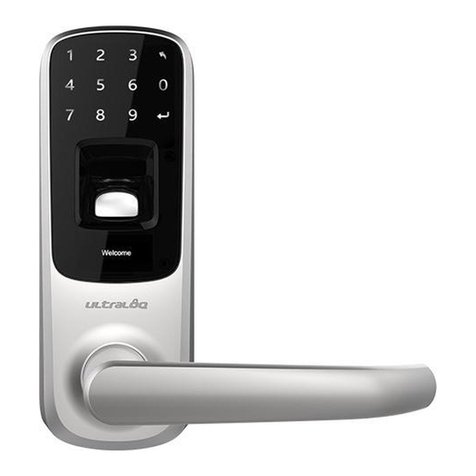
U-tec
U-tec Ultraloq UL3 installation instructions
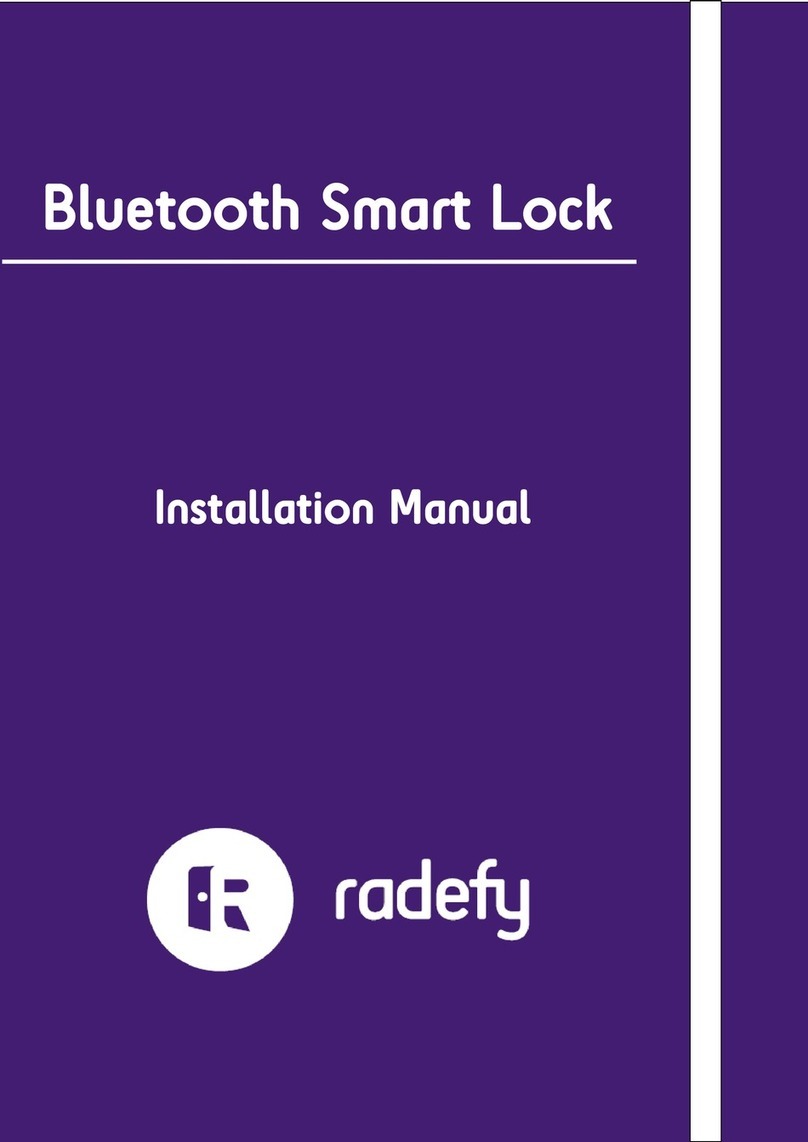
radefy
radefy Bluetooth Smart Lock installation manual
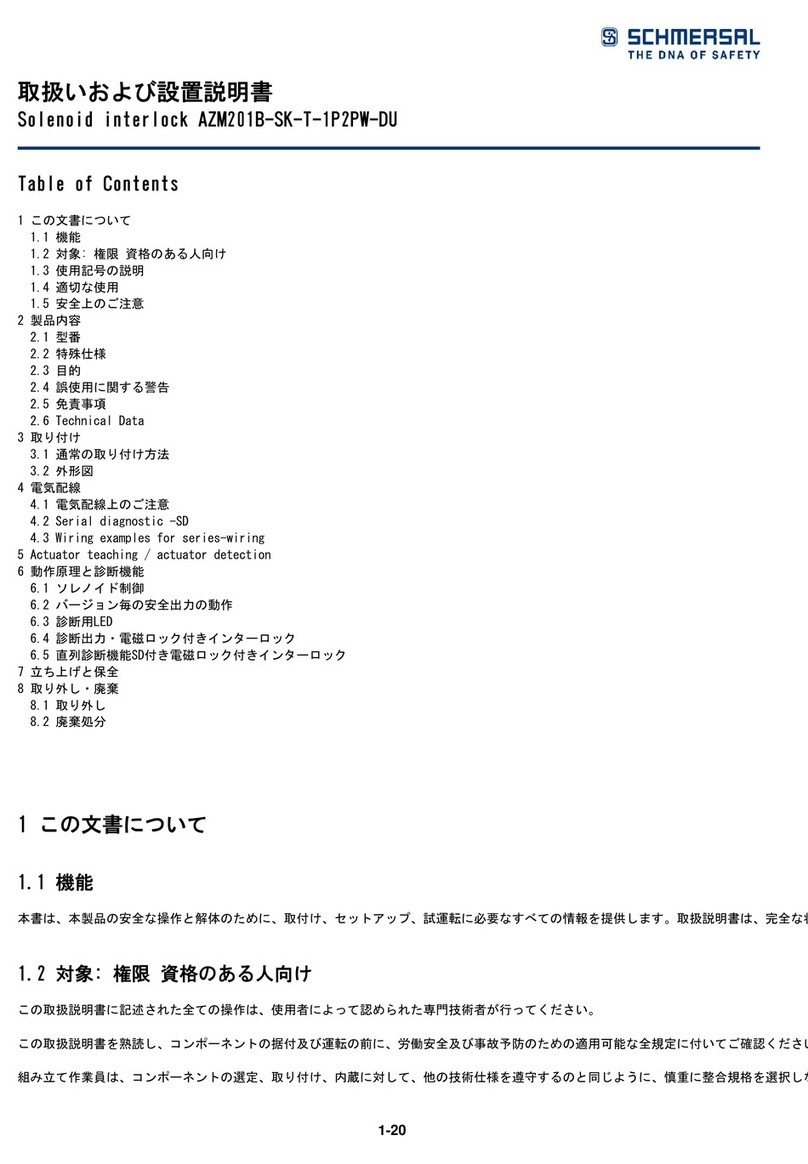
schmersal
schmersal AZM201B-SK-T-1P2PW-DU manual
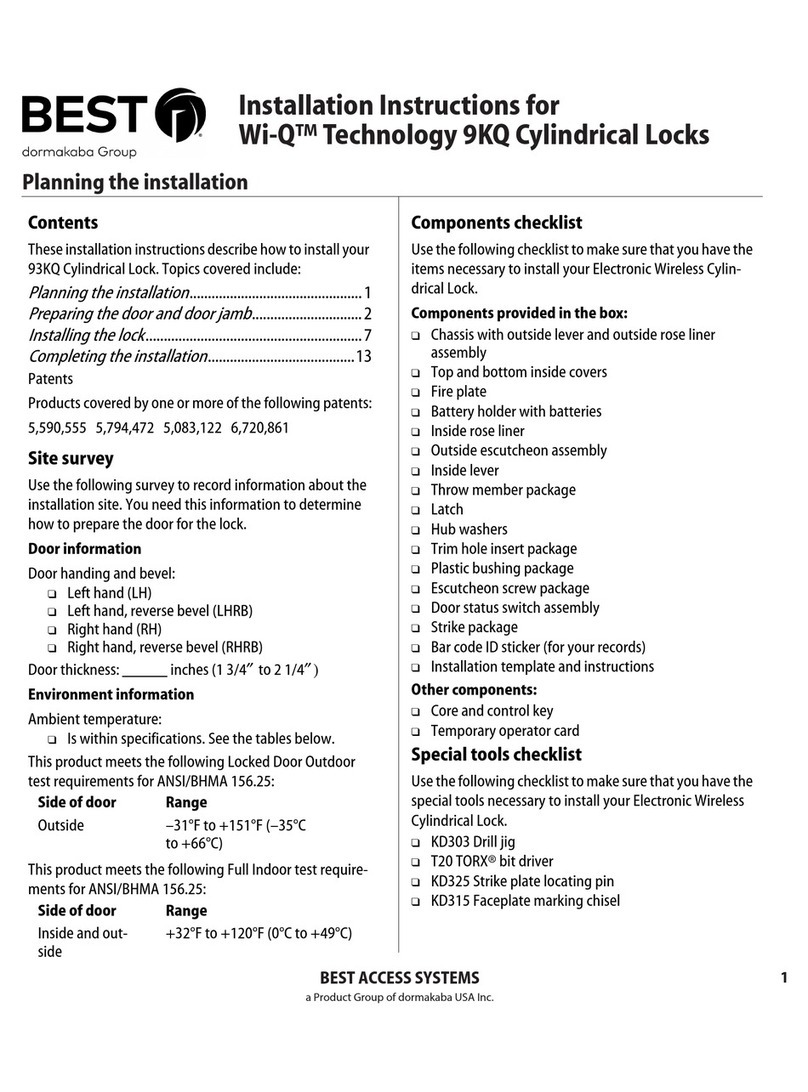
BEST ACCESS SYSTEMS
BEST ACCESS SYSTEMS 9KQ installation instructions
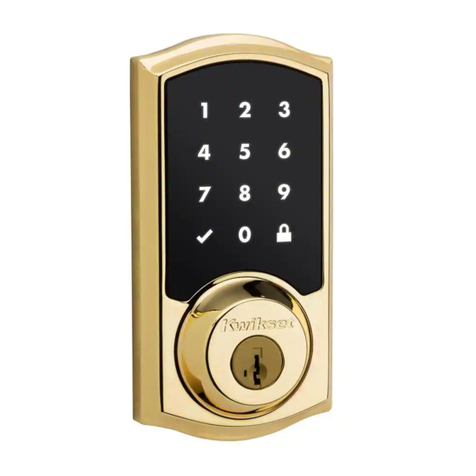
Kwikset
Kwikset Smartcode 915 Installation and user guide
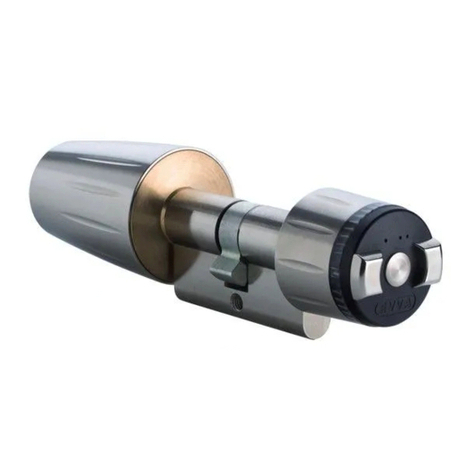
EVVA
EVVA e-primo user guide

